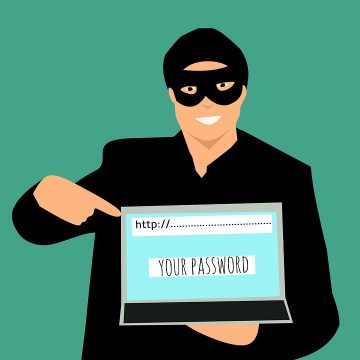Top 6 Tips to Avoid Phishing Scams on Your Social Networking Platforms

How much time do you spend on your social media accounts? Some platforms – for example, Instagram –now offer tools that show exactly how much time is spent on them, and there are mobile apps that can track all social activity automatically. Although there are claims that millennials are ditching social media, and there’s somewhat of an anti-social media movement going around, the numbers tell a different story. Whether you look at the statistics of Instagram, Facebook, or Twitter, the numbers of daily active users are steadily growing. Even Snapchat, a social media platform that has been pronounced dead too many times to count, is maintaining a steady number after a slight drop since its golden age in 2017. Of course, a lot of that has to do with the fact that more and more people in the world are joining the network as Internet connections are becoming more and more accessible.
Social networking platforms are some of the most popular websites and apps in the world used daily by millions of people. What does that mean? That means that they are the prime target of cyber attackers. In many cases, they orchestrate phishing attacks that are set up to extract personal information. You can learn more about phishing in general HERE, but in this report, we specifically talk about phishing scams and how to avoid phishing on social media accounts. If you are curious, keep reading.
Beware of phishing on social media accounts
Every time you open a social networking app or website, you are exposing yourself to a great deal of things. First and foremost, you are exposed to the opinions of millions of people. Luckily, while that can be excruciatingly annoying and even downright emotionally-crushing, your own security is not harmed by opinions. Unfortunately, social networks also offer a platform to share links, buttons, surveys, direct messages, and so on. These are the things that you need to be most cautious about if you do not want to face phishing scams. The list below represents the top tips that virtual security experts have for users who are worried about phishing scams and other dangers that might lurk in social networks.
1. Go for quality, not quantity
In most cases, it is completely free to sign up for social networking platforms. You type in your preferred username, choose the preferred method of login (e.g., with Facebook credentials or via email), set up two-factor authentication, and you are good to go. This kind of freedom might inspire some to go and sign up for everything and anything. Obviously, that is not the way to go about things. Even such giants as Facebook or Twitter experience security issues and data breaches, and you’d think that they should be immune to these things considering the money and the resources available to them. So, when choosing which social media platforms to join, always think about whether or not that is truly necessary. Needless to say, if you want to cover all bases, you need to be extra careful.
2. Asses the platforms you join carefully
We assume that most people run their social media accounts using mobile apps, but in case you are using a browser to connect, you have to be extra cautious about less familiar platforms. Note that fake social networking platforms could be set up just to collect your password, email address, date of birth, and similar information. The same goes for mobile apps. Do NOT download apps that you are not familiar with. While Facebook, Twitter, Reddit, and similar apps are, of course, legitimate and reputable, if you are roped into downloading an app you are not familiar with, you need to do your research. Speaking of downloading apps, make sure you use reputable sources, such as Google Play, but do not forget that even those could be exploited by schemers behind phishing scams.
3. Beware of clandestine phishing websites
This one is specifically for those who use browsers to access social media accounts. Did you know that fake login pages that look identical to the login pages of popular social media platforms can be set up by cyber attackers? Unfortunately, that is true. Just recently, Microsoft took down 99 domains that imitated Microsoft URLs for the purpose of exposing users to phishing scams. While Microsoft isn’t a social network, this is a perfect example of how schemers operate. To avoid such imposter websites, make it a habit to check the URL and the certification (green padlock) next to it. If the URL contains a misspelling, you see HTTP instead of the desired HTTPS, and the certification is simply not there, close the website immediately.
4. Social media phishing scams might lurk in your inbox
Keeping the 3rd point in mind, let’s talk about phishing emails. You might already be familiar with a scam where schemers send you a fake email, allegedly, referring to your social networking accounts. In most cases, such emails are set up to make you think that someone has tried to access your accounts, that your password was reset due to a security issue, or that the platform needs you to confirm a password during a routine security check. As you know, phishing scams can be successful only if they are believable, and, unfortunately, phishing emails can be extremely deceptive. If you click buttons and links represented via them, you could end up in phishing websites discussed in the previous paragraph.
5. Do not ignore fake accounts and pages
If you have been in the social networking circles for a long time, you might have come across fake profiles and pages. The pages might be used to promote bogus products, spread fake news, or even post links associated with malicious phishing scams. Fake profiles could be used on a more personal level, and the fake people could try to send misleading messages, files, and links via direct messaging, posts, comments, and other mediums that exist in social networking platforms. Interacting with people you do not know is always risky, and so you need to be mindful about it. If you are convinced that you have come across a fake account, profile, or page, do not ignore it. Even though you might be smart enough to unveil schemers, there are plenty of users who are not as perceptive. The same goes with phishing emails, which you should report to halt schemers for at least a little bit.
6. Use available features and settings to your advantage
Privacy settings and tools are there to help you, and so you should not ignore them. For example, depending on the platform you use, you could set up the settings to prevent people you do not know from seeing your profile, sending you direct messages, posting under your posts or photos, etc. Phishing scams are only successful if the attackers can gain access to you, and you might be able to prevent that from happening. Also, depending on the platform you use, you might be able to block profiles or accounts that you know are linked to phishing scams. If the social network platform you are using is not offering any security tools, you might need to rethink your trust in it overall.
As you can see, the ball is in your hands, and if you take care of yourself, you should evade phishing scams. Of course, if you fall into the traps laid by schemers, and you end up disclosing login credentials and other sensitive information, you need to act fast. First and foremost, you have to reset your password, and when you do that, do not take the easy route. Make your password strong and impenetrable. We recommend using the Cyclonis Password Manager to generate complicated passwords and have them encrypted for safety. To learn more about the features of this free tool, please continue reading HERE. And if you have any other questions pertaining to phishing on social media accounts, do not hesitate to leave a comment below.








